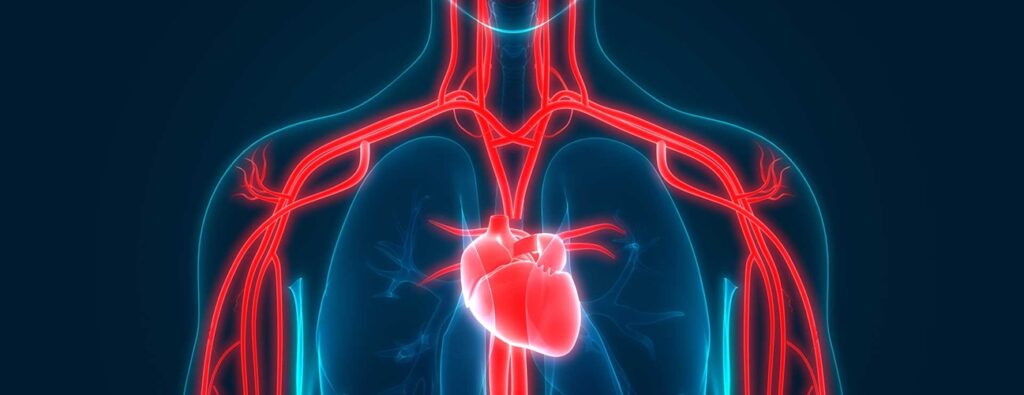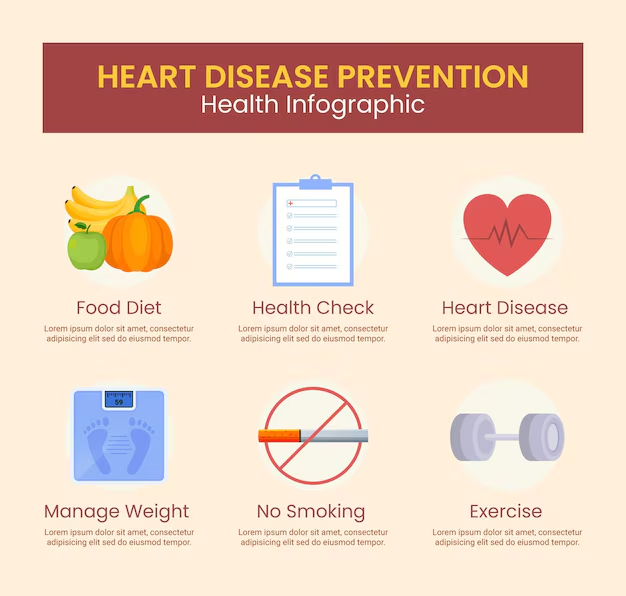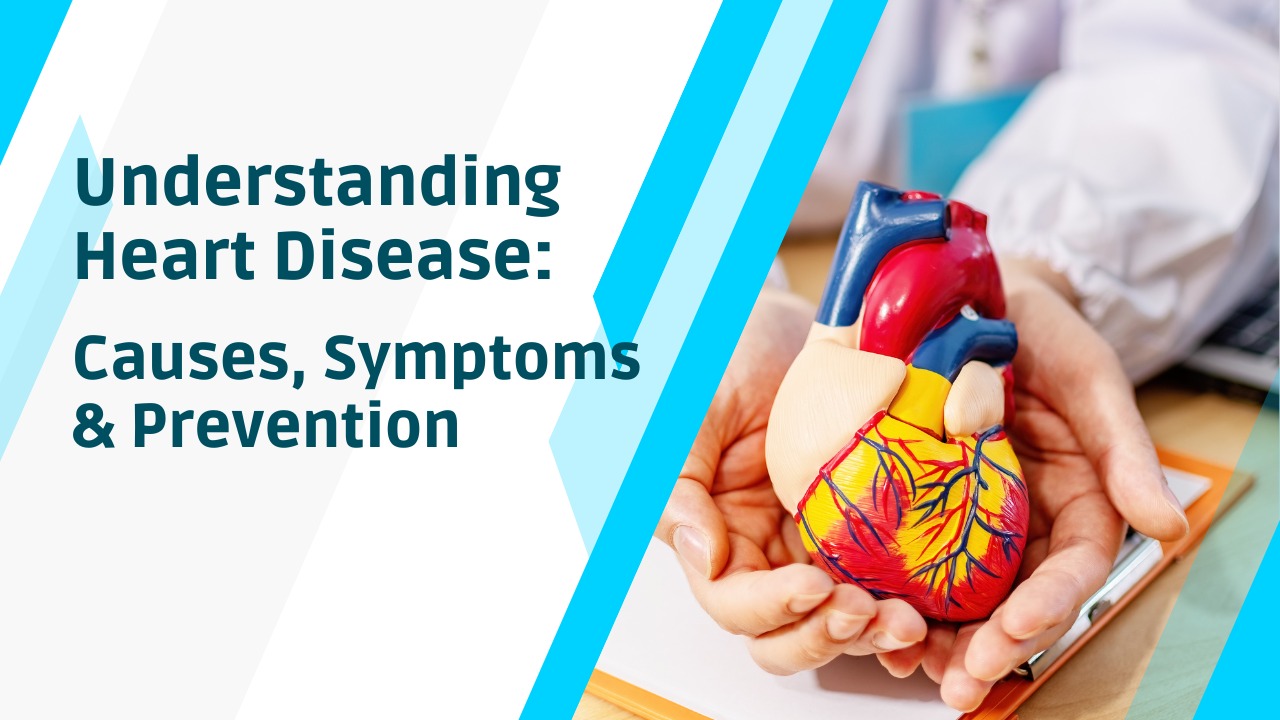Heart disease, also known as cardiovascular disease (CVD), encompasses a variety of conditions that impact the heart and blood vessels. It remains one of the leading causes of death worldwide, affecting millions of people annually. Heart disease is not a single condition but a collection of related health issues, many of which can be prevented with proper lifestyle changes and medical care.
The causes of heart disease often include factors such as high blood pressure, high cholesterol, smoking, and obesity. Risk factors like age, family history, and poor diet can also increase the likelihood of developing this condition. Symptoms may range from chest pain to fatigue, and some people may experience no symptoms until a major health event occurs.
Early detection and treatment are vital in managing heart disease. A healthy lifestyle, including regular exercise, a balanced diet, and avoiding smoking, plays a crucial role in prevention. Regular check-ups and medical guidance can help reduce the risk and improve heart health.
Understanding Heart Disease

Heart disease includes several conditions that affect the heart’s function, such as coronary artery disease, heart attacks, heart failure, arrhythmias, and congenital heart defects. These conditions can result from factors like genetics, lifestyle habits, and environmental influences. Maintaining a healthy lifestyle and addressing risk factors, such as poor diet, lack of exercise, and smoking, can help reduce the likelihood of developing heart disease. Genetic factors and family history may also play a role, making early detection and prevention important in managing heart health.
Coronary Artery Disease (CAD)
Coronary artery disease is the most prevalent form of heart disease and the leading cause of heart-related deaths. It occurs when the arteries that supply oxygen-rich blood to the heart become narrowed or blocked due to a buildup of plaque. This plaque is made up of cholesterol, fatty substances, and other debris. As the blockage worsens, it can lead to chest pain (angina) or a heart attack. A heart attack happens when the blood flow to the heart is severely reduced or entirely blocked, causing serious damage to the heart muscle.
Heart Attack (Myocardial Infarction)
A heart attack, also known as myocardial infarction (MI), occurs when the blood flow to part of the heart muscle is blocked for a prolonged period. Without adequate blood supply, the affected heart tissue begins to die, leading to lasting heart damage. Symptoms of a heart attack can include sudden chest pain, shortness of breath, sweating, nausea, and dizziness. Heart attacks are a critical aspect of heart disease and require immediate medical attention to prevent further harm to the heart.
Heart Failure
Heart failure, often referred to as congestive heart failure, is a condition in which the heart is unable to pump blood effectively enough to meet the body’s needs. This can occur due to conditions like coronary artery disease, high blood pressure, or following a heart attack. In heart failure, the heart struggles to circulate blood properly, leading to symptoms such as fatigue, shortness of breath, swelling in the legs and ankles, and fluid retention. Heart failure is a serious form of heart disease that can worsen over time without proper management.
Arrhythmias
Arrhythmias are irregular heartbeats, which can be too fast, too slow, or erratic. These irregularities occur when the electrical impulses that regulate the heart’s rhythm are disrupted. While some arrhythmias may be harmless, others can lead to serious complications like strokes or sudden cardiac arrest, both of which are life-threatening. Arrhythmias are a significant concern within heart disease, as they can indicate deeper issues with the heart’s electrical system, requiring timely diagnosis and treatment.
Valve Diseases
The heart has four valves that control blood flow through its chambers: the aortic valve, mitral valve, tricuspid valve, and pulmonary valve. Valve diseases occur when one or more of these valves become damaged or diseased, preventing the heart from pumping blood efficiently. This improper blood flow can cause a variety of symptoms, including shortness of breath, fatigue, and fluid buildup. If left untreated, valve diseases can lead to heart failure, making it a critical aspect of heart disease that needs attention and care.
Congenital Heart Defects
Congenital heart defects are conditions that people are born with, affecting the structure and function of the heart. These defects can range from mild to severe, and they can impact how the heart pumps blood or its overall structure. Congenital heart disease (CHD) is a significant cause of heart disease in children, though advances in medical treatments and surgeries have greatly improved survival rates. Early diagnosis and intervention are crucial for managing congenital heart defects and ensuring a good quality of life for those affected.
Risk Factors for Heart Disease
Heart disease is primarily a result of lifestyle choices, underlying health conditions, and genetic factors. Understanding the risk factors can help in taking preventive measures.
Unhealthy Diet
An unhealthy diet that is high in saturated fats, trans fats, and cholesterol is one of the major contributors to heart disease. These unhealthy fats can lead to the buildup of plaque in the arteries, which narrows and blocks blood flow, increasing the risk of coronary artery disease. Additionally, consuming too much salt can contribute to high blood pressure, another significant risk factor for heart disease. A poor diet can also lead to obesity and elevated cholesterol levels, which further increase the chances of developing heart disease.
Physical Inactivity
Physical inactivity is a leading risk factor for heart disease. Regular exercise helps maintain a healthy weight, improves circulation, and reduces blood pressure. A lack of exercise can lead to obesity, diabetes, and high cholesterol levels, all of which contribute to the development of heart disease. Physical activity also strengthens the heart muscle and helps maintain proper blood flow, reducing the risk of cardiovascular issues.
Smoking
Smoking is a significant contributor to cardiovascular diseases, including heart disease. It damages the blood vessels, reduces the oxygen supply to the heart, and increases blood pressure. Smoking accelerates the buildup of plaque in the arteries and raises the levels of bad cholesterol (LDL), while lowering the levels of good cholesterol (HDL). These effects make smokers more susceptible to heart disease and increase the risk of heart attacks and strokes.

High Blood Pressure (Hypertension)
High blood pressure, or hypertension, is one of the primary risk factors for heart disease. When blood pressure is consistently high, the heart has to work harder, which can lead to thickening and weakening of the heart muscle over time. This can eventually result in heart failure or other cardiovascular complications. Managing blood pressure is essential for reducing the risk of heart disease and maintaining overall heart health.
High Cholesterol
Cholesterol is a fatty substance found in the blood, and an imbalance in cholesterol levels is a major contributor to heart disease. High levels of low-density lipoprotein (LDL), also known as “bad” cholesterol, can lead to plaque buildup in the arteries, increasing the risk of heart disease. On the other hand, high levels of high-density lipoprotein (HDL), or “good” cholesterol, can help protect against heart disease by removing excess cholesterol from the bloodstream and reducing plaque formation.
Diabetes
Diabetes, particularly when not well-managed, is a significant risk factor for heart disease. High blood sugar levels can damage blood vessels and nerves that regulate the heart. Additionally, individuals with diabetes often have high blood pressure and elevated cholesterol levels, both of which increase the risk of heart disease. Properly managing diabetes through medication, diet, and exercise can help reduce the risk of heart disease and its complications.
Family History
A family history of heart disease can increase your risk of developing similar conditions. If close relatives, such as parents or siblings, were diagnosed with heart disease at an early age, you may be more likely to develop it as well. While genetics play a significant role, lifestyle factors like diet, exercise, and stress management can help reduce the impact of a family history and lower the risk of heart disease.
Age and Gender
The risk of heart disease increases with age, and men generally develop heart disease at an earlier age than women. However, after menopause, women’s risk of heart disease rises significantly, and they become as likely as men to develop heart disease. Age-related changes, such as the stiffening of blood vessels and hormonal changes, can contribute to the development of heart disease, making it crucial to monitor heart health as you age.
Stress
Chronic stress can significantly contribute to heart disease by leading to unhealthy coping habits such as smoking, overeating, or excessive alcohol consumption. Stress can also cause temporary spikes in blood pressure and heart rate, which, if sustained over time, may strain the heart. Managing stress through relaxation techniques, exercise, and healthy habits can help reduce the impact of stress on heart health.
Excessive Alcohol Consumption
Excessive alcohol consumption can lead to a range of heart-related issues, including high blood pressure, heart failure, and arrhythmias. While moderate alcohol intake may have some protective effects on the heart, drinking too much can damage the heart muscle and increase the risk of developing heart disease. Additionally, heavy drinking can lead to obesity, which is another risk factor for heart disease. Limiting alcohol intake is an important step in maintaining a healthy heart.
Symptoms of Heart Disease
The symptoms of heart disease can vary depending on the type and severity of the condition. Some people may experience no symptoms at all, while others may suffer from severe, life-threatening symptoms. Common signs of heart disease include:
Chest Pain or Discomfort
Chest pain is often described as a sensation of pressure, tightness, or squeezing in the chest area. This discomfort may occur suddenly or gradually and can be intense, persistent, or intermittent. It’s commonly associated with conditions like heart attacks or angina and should be evaluated immediately, especially if it’s accompanied by other symptoms like shortness of breath or sweating.

Shortness of Breath
Shortness of breath, or difficulty breathing, can occur during physical activity or even when lying down. This sensation may worsen over time and is often a sign of heart conditions such as heart failure, where the heart struggles to pump enough blood to meet the body’s needs. If shortness of breath becomes severe or persistent, it’s important to seek medical attention.
Fatigue
Fatigue refers to unusual tiredness or weakness, even after adequate rest or minimal physical activity. People with heart disease may experience constant fatigue due to the heart’s inability to pump blood efficiently, leading to decreased oxygen supply to vital organs. This symptom can be a sign of heart failure or other cardiovascular issues.
Dizziness or Lightheadedness
Dizziness or lightheadedness may occur as a result of arrhythmias (irregular heartbeats) or heart failure. These conditions can disrupt the normal flow of blood to the brain, causing a feeling of unsteadiness or fainting. If dizziness is recurrent or accompanied by other symptoms, it may indicate a serious heart condition that needs immediate medical attention.
Swelling
Swelling in the legs, ankles, or abdomen can be a sign of heart failure. When the heart is unable to pump blood effectively, fluid can build up in the body, leading to swelling, particularly in the lower extremities or abdomen. This fluid retention can be painful and may worsen over time if the underlying heart condition is not treated.
Irregular Heartbeat
An irregular heartbeat, characterized by skipping beats or a racing heart, can signal arrhythmias. These abnormal heart rhythms occur when the electrical signals controlling the heartbeat are disrupted. In some cases, arrhythmias can be harmless, but they can also lead to more serious heart complications, including stroke or cardiac arrest.
Diagnosis of Heart Disease
If heart disease is suspected, various diagnostic tests and procedures can help identify the condition:
Physical Exam and Medical History
A healthcare provider will begin by conducting a complete physical examination to check for any signs of heart disease. They will also ask detailed questions about the patient’s personal and family medical history, including any history of high blood pressure, high cholesterol, diabetes, smoking, or heart-related illnesses. Lifestyle habits such as diet, exercise, alcohol use, and stress levels are also reviewed to assess potential risk factors.
Blood Tests
Blood tests are commonly used to evaluate several important health markers. These include cholesterol levels (both LDL and HDL), blood sugar levels, and specific proteins such as C-reactive protein (CRP), which can indicate inflammation in the body. Abnormal results in these tests may point to an increased risk of heart disease and help guide further diagnostic steps.

Electrocardiogram (ECG or EKG)
An electrocardiogram is a quick and painless test that records the electrical activity of the heart. It helps identify issues such as abnormal heart rhythms (arrhythmias), signs of a previous or current heart attack, and other irregularities in how the heart is functioning. The results provide valuable insights into the heart’s overall health.
Echocardiogram
An echocardiogram is a non-invasive test that uses ultrasound waves to create moving images of the heart. It allows doctors to closely examine the heart’s structure, including the chambers and valves, and to measure how well the heart is pumping blood. This test is often used to diagnose heart valve disease or heart failure.
Stress Test
A stress test involves monitoring the heart while the patient exercises, usually on a treadmill or stationary bike. This test helps determine how well the heart functions during physical exertion. It can uncover problems such as reduced blood flow to the heart muscles, which may indicate coronary artery disease or exercise-induced arrhythmias.
Angiography
Angiography is a specialized imaging procedure used to look at the blood vessels of the heart. During this test, a contrast dye is injected into the coronary arteries, and X-ray images are taken to see if there are any blockages or narrowings. This test is essential for detecting and assessing the severity of coronary artery disease and is often used before planning treatments like angioplasty or surgery.
Treatment of Heart Disease
The treatment for heart disease varies based on the type and severity of the condition, but it typically involves a combination of lifestyle changes, medications, and sometimes surgical interventions.
Medications
Statins: Drugs that lower cholesterol levels and reduce the risk of plaque buildup in the arteries.
Beta-blockers: Medications that lower heart rate and blood pressure, reducing the strain on the heart.
Antiplatelet drugs: Medications like aspirin that prevent blood clots from forming.
ACE inhibitors: Drugs that relax blood vessels and help lower blood pressure.
Diuretics: Used to reduce fluid retention in heart failure patients.
Lifestyle Modifications
Dietary Changes: A heart-healthy diet includes plenty of fruits, vegetables, whole grains, lean proteins, and healthy fats. Limiting salt, sugar, and processed foods is essential for preventing heart disease.

Exercise: Regular physical activity can strengthen the heart, lower blood pressure, and improve cholesterol levels. Aim for at least 150 minutes of moderate-intensity exercise per week.
Smoking Cessation: Quitting smoking is one of the most important steps in reducing the risk of heart disease.
Stress Management: Techniques like mindfulness, yoga, meditation, and deep breathing exercises can help manage stress levels.
Surgical Interventions
Angioplasty and Stent Placement: A procedure to open blocked arteries and place a small mesh tube (stent) to keep the artery open.
Bypass Surgery: In cases of severe coronary artery disease, bypass surgery may be necessary to reroute blood flow around blocked arteries.
Heart Transplant: In cases of severe heart failure, a heart transplant may be the only viable option.
Prevention of Heart Disease
Preventing heart disease involves addressing modifiable risk factors and leading a healthy lifestyle. Key prevention strategies include:
Maintaining a Healthy Weight
Keeping your body weight within a healthy range is essential for lowering the risk of heart disease. Excess weight can contribute to health problems like high blood pressure, high cholesterol levels, and type 2 diabetes, all of which increase the likelihood of developing heart-related conditions.
Regular Exercise
Participating in consistent physical activity, especially aerobic exercises such as walking, jogging, swimming, or cycling, helps improve heart health. Exercise strengthens the heart muscle, improves circulation, and supports healthy blood pressure and cholesterol levels, reducing the overall risk of heart disease.

Eating a Balanced Diet
Following a nutritious and balanced diet that includes plenty of fruits, vegetables, whole grains, and lean proteins while limiting unhealthy fats, added sugars, and processed foods plays a key role in protecting your heart. A heart-friendly diet helps control weight and lowers blood pressure and cholesterol.
Avoiding Smoking
Quitting smoking or avoiding tobacco products entirely is one of the most effective steps to prevent heart disease. Smoking damages blood vessels, raises blood pressure, and increases the chances of developing serious heart conditions, including heart attacks and strokes.
Managing Stress
Practicing healthy ways to cope with stress—such as mindfulness, meditation, deep breathing exercises, and making time for enjoyable activities—can help maintain heart health. Chronic stress may lead to unhealthy behaviors and physical changes that increase the risk of heart disease.
Routine Check-ups
Visiting your healthcare provider regularly for check-ups helps monitor key health indicators like blood pressure, blood sugar, and cholesterol levels. Early detection of these risk factors allows for timely treatment, significantly reducing the chances of developing heart disease.
Conclusion
Heart disease continues to be a major public health issue globally, but many types of it are preventable. By adopting healthier lifestyles, including a balanced diet and regular exercise, individuals can significantly reduce their risk. Early detection through routine check-ups also plays a vital role in managing heart disease before it becomes severe.
Understanding the causes, symptoms, and risk factors of heart disease enables people to make informed decisions about their health. Key risk factors like high cholesterol, smoking, and obesity can be managed effectively with proper lifestyle changes, thus lowering the likelihood of developing heart-related conditions.
With advancements in medical treatments and ongoing public health efforts, the future of heart disease prevention and treatment looks promising. The focus on early intervention, better awareness, and more effective treatments is essential in reducing the global burden of heart disease and helping people live healthier, longer lives.
FAQs
- What is heart disease ?
Heart disease refers to a group of conditions that affect the heart and blood vessels. These include coronary artery disease, heart attacks, heart failure, arrhythmias, and valve problems. It is one of the leading causes of death worldwide. - What are the early warning signs of heart disease ?
Common warning signs include chest pain or pressure, shortness of breath, extreme fatigue, dizziness, and irregular heartbeat. Some people may also experience swelling in the legs or sudden weight gain. - Can heart disease be prevented ?
Yes, heart disease can often be prevented through a healthy lifestyle. Eating a balanced diet, staying physically active, avoiding smoking, managing stress, and going for regular health check-ups can reduce your risk. - Who is most at risk of developing heart disease ?
People with high blood pressure, high cholesterol, diabetes, a family history of heart disease, or unhealthy habits like smoking and poor diet are more at risk. Age and gender can also influence risk. - How is heart disease diagnosed ?
Doctors may use a combination of medical history, physical exams, blood tests, ECGs, echocardiograms, stress tests, or angiography to diagnose heart disease and determine its type and severity.


